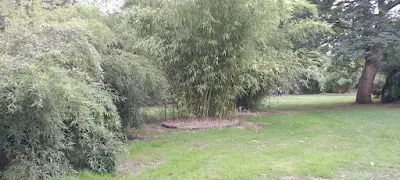Seabreeze bamboo, also known as Bambusa malingensis, is a popular choice for creating a privacy screen in outdoor spaces. Its tall, slender stalks and lush green foliage make it an attractive option for any garden or backyard. However, growing bamboo plants can be a bit tricky if you’re not familiar with the right methods. In this article, we’ll explain how to successfully grow Seabreeze bamboo for a privacy screen.
Seabreeze bamboo is clump-forming bamboo
First, it’s important to note that Seabreeze bamboo is a clump-forming bamboo. It will not spread aggressively like some other types of bamboo. This is great news for those who are concerned about bamboo taking over their garden or backyard. In fact, it does still require plenty of space to grow and reach its full potential.
The first step is to choose a suitable location. This type of bamboo thrives in full sun or partial shade. It’s best to plant it in a location that receives at least six hours of direct sunlight each day.
Also, consider the soil type and drainage when choosing a location. Seabreeze bamboo prefers well-drained soil that is rich in organic matter. If your soil is heavy clay or sandy, you may need to amend it with compost or other organic matter to improve its fertility and drainage.
Check out where to buy bamboo in the UK, here
Planting Seabreeze bamboo
Once you have chosen a suitable location, it’s time to prepare the soil. Start by removing any grass, weeds, or other debris from the area.
Then, dig a hole that is twice as wide as the root ball of your bamboo plant. Mix some compost or other organic matter into the soil that you removed from the hole. This will improve the soil’s fertility and drainage.
Next, it’s time to plant your Seabreeze bamboo. Gently remove the bamboo plant from its container and loosen any tangled roots. Place the plant in the hole and fill in around it with the amended soil. Water the plant well and keep the soil consistently moist until the plant is established.
In this video, I filled the gaps in the bamboo screen and explain what to do when removing bamboo from pots.
Monitoring new bamboo plant
Once your Seabreeze bamboo is planted, it’s important to keep up with regular maintenance to ensure that it grows strong and healthy. This includes regular watering, fertilizing, and pruning.
Watering is crucial, especially during the first few weeks after planting. The soil should be kept consistently moist, but not waterlogged.
As the plant becomes established, you can reduce the frequency of watering. However, it’s important to keep an eye on the soil moisture level and water as needed.
Caring for Seabreeze bamboo
Fertilizing is also important for Seabreeze bamboo. Use a balanced fertilizer that is high in nitrogen, phosphorus, and potassium. Apply the fertilizer according to the package instructions, usually once a month during the growing season.
Pruning is another important step in maintaining your Seabreeze bamboo. Prune off any dead or damaged stalks and remove any yellow or brown leaves. This will promote healthy growth and encourage new stalks to sprout.
With proper care and maintenance, your Seabreeze bamboo will grow quickly and create a lush, green privacy screen in no time. As it grows taller, you can also add a trellis or other support to help it maintain its shape and keep it upright.
Have you heard about Alphonse Karr bamboo? One of the outstanding yellow bamboo plants, find out.
Bambusa malingensis Seabreeze Bamboo for Privacy Screen
All in all, growing Seabreeze bamboo for a privacy screen is a great way to add some greenery to your outdoor space.
However, it does require proper care and maintenance to ensure that it thrives.
By choosing a suitable location, preparing the soil, and keeping up with regular care & maintenance, your bamboo will provide the privacy screen you envisioned.








